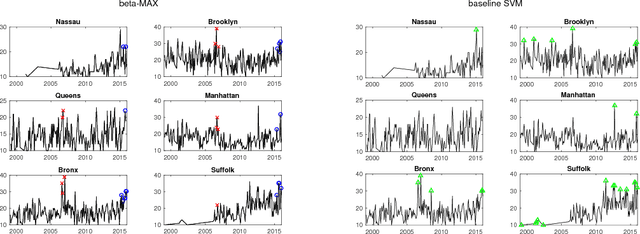Machine Learning for Drug Overdose Surveillance
Paper and Code
Oct 06, 2017
We describe two recently proposed machine learning approaches for discovering emerging trends in fatal accidental drug overdoses. The Gaussian Process Subset Scan enables early detection of emerging patterns in spatio-temporal data, accounting for both the non-iid nature of the data and the fact that detecting subtle patterns requires integration of information across multiple spatial areas and multiple time steps. We apply this approach to 17 years of county-aggregated data for monthly opioid overdose deaths in the New York City metropolitan area, showing clear advantages in the utility of discovered patterns as compared to typical anomaly detection approaches. To detect and characterize emerging overdose patterns that differentially affect a subpopulation of the data, including geographic, demographic, and behavioral patterns (e.g., which combinations of drugs are involved), we apply the Multidimensional Tensor Scan to 8 years of case-level overdose data from Allegheny County, PA. We discover previously unidentified overdose patterns which reveal unusual demographic clusters, show impacts of drug legislation, and demonstrate potential for early detection and targeted intervention. These approaches to early detection of overdose patterns can inform prevention and response efforts, as well as understanding the effects of policy changes.
 Add to Chrome
Add to Chrome Add to Firefox
Add to Firefox Add to Edge
Add to Edge